Mark Sisson's Blog, page 94
September 27, 2019
Weekly Link Love — Edition 48

Research of the Week
Not everyone responds to blue light at night the same way.
How a keto diet (possibly) affects muscle mass.
High dose metformin blunts muscle gain.
Your retinal mitochondria are key to blue light’s effect on eye health.
Despite the power of livestock ownership to improve human nutrition in developing countries, very few “experts” take this into account.
New Primal Blueprint Podcasts

Episode 376: Debbie Potts: Host Brad Kearns chats with Ironman athlete and nutrition expert Debbie Potts about fat-adapted endurance training.

Episode 377: Susan Bratton: Host Elle Russ chats with the “Dear Abby of hot sex.”

Primal Health Coach Radio, Episode 26: Laura and Erin chat with Annika McCann about CBD and the power of plants.

Primal Health Coach Radio, Episode 27: Laura and Erin chat with Chris Irvin, Education Manager at Perfect Keto.
Each week, select Mark’s Daily Apple blog posts are prepared as Primal Blueprint Podcasts. Need to catch up on reading, but don’t have the time? Prefer to listen to articles while on the go? Check out the new blog post podcasts below, and subscribe to the Primal Blueprint Podcast here so you never miss an episode.
Media, Schmedia
A cattle killer in eastern Oregon has authorities stumped.
While overall numbers of starlings have been dropping in Europe, areas with increased livestock have seen increasing populations of the birds.
Interesting Blog Posts
In praise of bones and fat. Hear hear!
Is Cam Newton’s vegan diet a good idea?
Social Notes
Fancy meeting Dr. Steven Gundry in France on a hike.
Everything Else
By collecting a glossary of foreign terms for happiness without direct English translations, researchers hope to broaden our happiness horizons.
Things I’m Up to and Interested In
Great video: Amy Berger explores whether gout is caused by meat or metabolic syndrome.
Article I found interesting: How an older marathoner is trying to run faster than he was.
Nice overview: Hyperinsulinemia as harbinger of metabolic syndrome.
I shouldn’t have to say this: Don’t use plastic teabags.
These are the experts tasked with preserving our heart health: The AHA’s idea of a healthy breakfast.
Question I’m Asking
Is exercise a miracle cure?
Recipe Corner
The second-best way to eat raw tuna: poke.
Pizza for breakfast? No, breakfast pizza.
Time Capsule
One year ago (Sep 22 – Sep 28)
8 Dietary Truths We Wish We Could Tell Non-Primal Types – Oh, the tales we could tell.
Male Menopause: What’s Behind Men’s Midlife Health?: Things men should be aware of.
Comment of the Week
“Congrats fresh grandpa!! Time to do ‘Primal Kitchen Baby Foods’!!!”
– As if I need more to do, Rafael! But we’ll see….

The post Weekly Link Love — Edition 48 appeared first on Mark's Daily Apple.



September 26, 2019
17 Vegetarian Whole30® Recipes
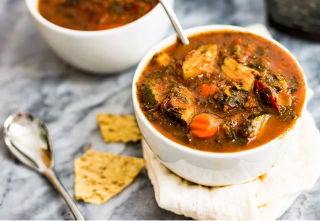 A special thanks to Aimee McNew
at Paleohacks.com for today’s Whole30® recipe roundup.
A special thanks to Aimee McNew
at Paleohacks.com for today’s Whole30® recipe roundup.
Yup, you can be a vegetarian and still do a Whole30 challenge. Find out how to plan a simple menu with veggie-friendly recipes that include breakfast, lunch, and dinner.
What is Whole30 anyway?
Whole30 is a 30-day challenge that’s similar to the Paleo diet, but with a few more restrictions. It excludes Paleo-friendly sweeteners (like honey and maple syrup), baked goods, alcohol, and most desserts.
Although the Paleo lifestyle incorporates gluten-free desserts, Whole30 believes you should hold off on them for the 30 days. The purpose is to reset how your mind thinks about sweets in the first place, so you no longer get the urges or cravings.
While the challenge is primarily short-term, some people opt to do it for longer periods of time. The benefit of this challenge is to evaluate how your body reacts to a more wholesome, cleaner-eating lifestyle (without inflammatory triggers).
How to Eat Vegetarian on a Whole30 Diet
If you’re thinking about doing a Whole30 Paleo challenge on a vegetarian diet, you’ll want to consider making some minor adjustments.
The first thing is to avoid plant-based sources of protein that you might be used to, like grains, legumes, and dairy. Although they are common staples in the vegetarian world, both Paleo and Whole30 diets exclude them from their food list.
To compensate for the exclusion of meat, it’s important to fill your plate with plenty of veggies, eggs, and (if you’re pescatarian) seafood for protein. If you’re vegan, you’ll want to sub in alternative sources of protein like:
Nuts and seeds (like almonds, walnuts, pecans, and pumpkin seeds)
Nut butters (like almond butter, cashew butter, and coconut butter)
Moderate amounts of fruits (like avocados, peaches, and berries )
Breakfasts
1. Whole30® Breakfast Chia Pudding
This simple and sweet chia pudding will fill you up and prevent pre-lunchtime snacking. Change it up each day by swapping in other favorite fruits.
Recipe: Sunkissed Kitchen | Whole30 Breakfast Chia Pudding
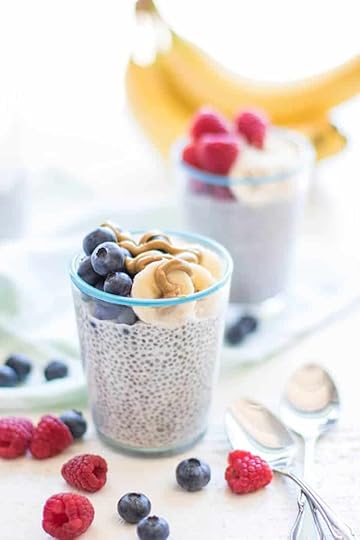
2. Whole30 Vegetarian Power Bowls
This one-pan recipe dresses roasted veggies in a lemon tahini dressing and tops it all with a hard-boiled egg. Prep it the night before for easy assembly in the morning!
Recipe: Well Plated by Erin | Whole30 Vegetarian Power Bowls
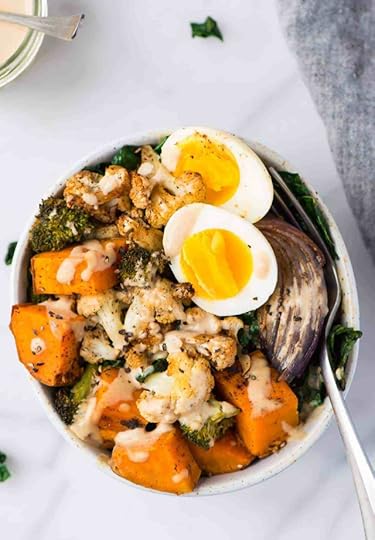
3. Easy Spaghetti Squash Apple Fritters
This savory-sweet fritter is crispy, light, and easy to make. Serve them with eggs and a fresh greens side salad to make it a complete meal.
Recipe: Paleo Running Momma | Easy Spaghetti Squash Apple Fritters

4. Healthy Breakfast Egg Muffins
Jumpstart your day with a recipe packed with tons of protein and veggies. Just be sure to leave out the optional cheese so it’s Whole30 compliant.
Recipe: Well Plated by Erin | Healthy Breakfast Egg Muffins

5. Green Smoothie
We can’t get enough of this superfood elixir made with leafy greens, creamy nut butter, and fiber-rich flax seeds.
Recipe: PaleoHacks | Green Smoothie

Lunches
6. 3-Ingredient Cloud Bread
You don’t have to give up bread on a Whole30. This simple and easy recipe requires just three ingredients and bakes up light and fluffy—perfect for sandwiches.
Recipe: PaleoHacks | 3-Ingredient Cloud Bread
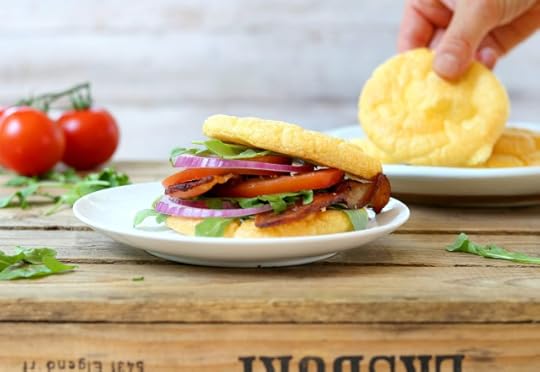
7. Easy Instant Pot Pumpkin Soup
This easy, creamy soup is perfect for chilly days—and goes great with a slice of 3-ingredient cloud bread on the side!
Recipe: Tasty Thin | Easy Instant Pot Pumpkin Soup

8. Beet Noodle Arugula Salad
Beets come alive with a zesty blend of lemon, tahini, and pine nuts. Pro tip: you can also add zucchini noodles to add more color and variety.
Recipe: PaleoHacks | Beet Noodle Arugula Salad

9. Whole30 Mediterranean Vegetable Soup
This veggie-rich soup is light enough for summer, but hearty enough for winter. Customize it with whatever veggies you have on-hand!
Recipe: Bites of Wellness | Whole30 Mediterranean Vegetable Soup

10. Thai Coconut Cauliflower Soup
Garlic, red pepper, and lime are the real show stoppers here—so much flavor you won’t even miss the meat.
Recipe: Sweet Lizzy | Thai Coconut Cauliflower Soup

11. Strawberry Avocado Spinach Salad
Toss this light salad together in a few minutes and savor all the sweet and tangy flavors from the balsamic dressing.
Recipe: Feed Them Wisely | Strawberry Avocado Spinach Salad
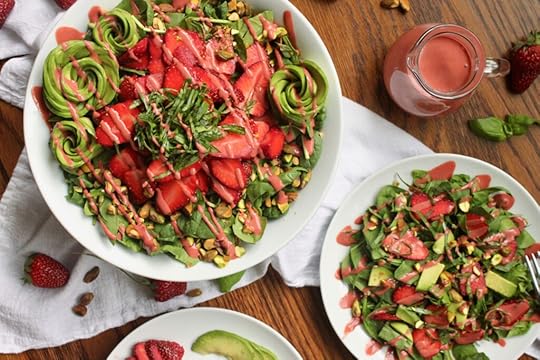
12. Whole30 Carrot Slaw
Slaw isn’t just a cabbage-only dish! This carrot version provides the perfect backdrop for a simple and filling lunch recipe.
Recipe: Peas and Crayons | Whole30 Carrot Slaw

Dinners
13. Mushroom Risotto with Cauliflower Rice
You can cook up this fragrant, garlic-infused recipe in under 45 minutes. Make it veggie-friendly by subbing out the beef broth with vegetable stock.
Recipe: PaleoHacks | Mushroom Risotto with Cauliflower Rice

14. Whole30 Zoodle Minestrone Soup
This hearty soup features six different veggies and a handful of flavor-packed spices. Make a big pot for dinner and eat leftovers all week.
Recipe: Physical Kitchness | Whole30 Zoodle Minestrone Soup

15. Whole30 Vegan Vegetarian Curry
Cauliflower, broccoli, and eggplant make up the heart of this vegan-friendly recipe. It also features anti-inflammatory ingredients like turmeric and tons of other fiber-rich nutrients.
Recipe: Heart Umami | Whole30 Vegan Vegetarian Curry
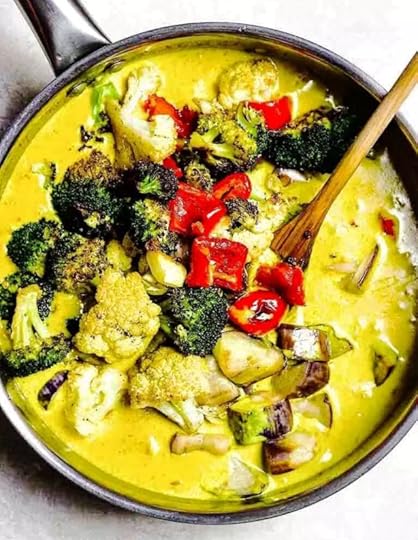
16. Cauliflower Rice Tabbouleh
This zesty recipe is a yummy alternative to rice or slaw and is uber easy to prep.
Recipe: Wholesomelicious | Cauliflower Rice Tabbouleh
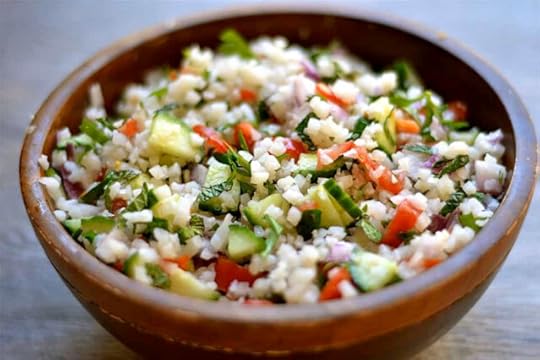
17. Tomato Mushroom Spaghetti Squash
Spaghetti night doesn’t go away on Whole30—it gets better! This vegetarian dish has all the classic pasta flavor with none of the gluten.
Recipe: What a Girl Eats | Tomato Mushroom Spaghetti Squash
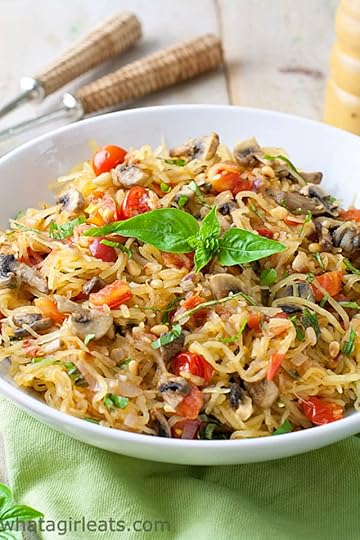
Thanks again to Aimee McNew from Paleohacks.com. Interested in seeing a certain recipe or roundup of a certain category—Whole30, Primal or Primal-keto? Let us know below!

The post 17 Vegetarian Whole30® Recipes appeared first on Mark's Daily Apple.



September 25, 2019
8 Life Lessons From a Primal Elder to Younger Groks
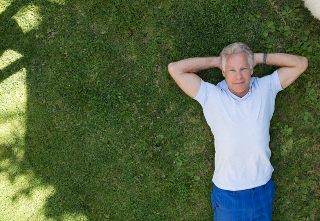 Last week, speaking as an elder of physical culture, I wrote a list of ten fitness tips for younger readers: the things that every young to middle-aged man or woman should know about training. Some were things I learned along the way. Some were mistakes I made. And some were big wins I figured out early. At any rate, people found it helpful, and quite a few asked for a follow-up—this time around general life advice.
Last week, speaking as an elder of physical culture, I wrote a list of ten fitness tips for younger readers: the things that every young to middle-aged man or woman should know about training. Some were things I learned along the way. Some were mistakes I made. And some were big wins I figured out early. At any rate, people found it helpful, and quite a few asked for a follow-up—this time around general life advice.
Note: I’m no life coach. But I do have a nice life, one I figured out on my own through trial and error and with a good deal of hard work. I speak just for myself, but maybe some insights will resonate. (And I hope you’ll share your own hard-won wisdom below.)
What should you keep in mind as you look forward to a long, well-lived life?
1) “Prioritize Sleep Above Everything.”
Don’t get romantically involved with someone who wants to stay up until 2 A.M., whether it’s watching Netflix or partying.
Don’t sign up for the 5 A.M. CrossFit class (unless—big maybe—you’re a natural early riser anyway).
Don’t relax with late night T.V. after a long day.
This isn’t easy. It’s not. It’s harder for people coming up now than it was for me. I didn’t have digital devices vying for my every waking moment or corporations whose expressly stated purpose was to compete with your sleep. That sucks, but it’s also reality, so you have to make it a huge priority—the biggest in your life.
The older you get, the more precious sleep gets. Your cognitive function, your memory, your physical preparedness, your metabolic health, your mental state, your emotional resiliency—everything depends on you getting a good night’s sleep. When you’re young, you believe you can skip sleep and feel okay. Don’t believe it. The damage is accumulating.
2) “Don’t Worry If You Don’t Know What To Be When You Grow Up—But Never Stop Looking.”
I didn’t figure out what I wanted to be when I grew up until I was 40. And I changed my mind about it ten years later. Before that, I bounced around from gig to gig, career to career, consistently thinking I had found the thing, throwing myself wholeheartedly into it, and then having my hopes dashed when it didn’t work. But I didn’t give up. And I always learned something from my forays. I always picked up a skill, made a connection, or figured out what I wasn’t good at. It all paid off when I threw myself into the Primal Blueprint, Mark’s Daily Apple, and, later, Primal Kitchen®.
Having a life purpose is one of the biggest predictors of longevity. Sure, there are dozens of longevity biomarkers you could look at, but one of my favorite (and one of the more malleable) positive predictors is having a life purpose.
3) “If You Want To Have Kids At Some Point (and You Have a Suitable Partner or Incredible Support System), Have Them.”
This dovetails with the last one, actually. Kids are kinda like “insta-purpose.” That said, they’re not for everyone. I’m not saying everyone should or has to have kids. But if you want them, you should have them. It gives you purpose. It gives you a lifelong project. And no matter what people say, it’s fun, awesome, and incredibly rewarding.
It also doesn’t get easier the older you get. Some aspects might. Financially, perhaps, you’ll probably be better equipped as an older person to pay for kids. But as far as energy goes, probably not. Hence, the importance of an all-in partner—or barring that—a committed support system you can genuinely count on for the little things…and the long haul.
4) “Deal With Your Stress.”
I don’t care who you are: Humans aren’t built to handle unending stress. It breaks us down, ruins our sleep, destroys our relationships, and kills our health. It also makes life very unpleasant. It snuffs out fun. It colors every interaction, every waking moment.
Find a way to deal with your stress that works. Doesn’t have to be a 10-day silent meditation retreat. It just has to work, and be something you’re willing to do consistently.
5) “The Sprinting/Chronic Cardio Dichotomy Applies to Everything, Especially Work.”
Whenever possible, work like a sprinter.
Do: You go hard for a week or two, doing long intense hours as needed to knock out that project, get your product launched, complete your to-do list, or whatever else needs doing. Then deload. Take a rest. Go camping, go hiking, read some fiction, watch a movie.
Don’t: You procrastinate, letting the project linger and languish for weeks on end. It haunts your days and nights, sitting in the back of your mind rapping on the window, never giving you a moment’s true rest.
Do: When the day begins, you get moving, do a solid 2-4 hours of deep work right away, then take a walking break and leisurely lunch. Come back for another 2-4 hours, then break. Go home.
Don’t: You never really get going, never spend more than five uninterrupted minutes working hard throughout the day. You avoid deep work, instead flipping back and forth between social media, your phone, and your work. You skip lunch because you’re never caught up, and you end up taking your work home with you where, again, you limp through it with half-focus. You just spent 14 hours “working” without much to show for it.
Apply everywhere as needed.
6) “Listen to Your Gut.”
This doesn’t just apply to those physiological warnings we get when an injury is about to occur in the gym, the ones I spoke about last week. It also applies to matters of life, business, personal growth, and love. Just know that there’s another wrinkle to this: the second voice that arises and says “don’t trust your gut, it’s more complex than that.” Life, business, and love are often more complicated than training, so take it on a case-by-case basis. Sometimes the gut is misguided, but it’s always got an insight.
Don’t always trust your gut unquestioningly. Always listen to it, however.
7) “Invest in Yourself.”
Anytime you’re making a decision, whether it be large or small, ask if the outcome will contribute to your growth and development. Will it give a valuable skill? Will it help you make interesting connections? What will you learn?
That’s how I’ve always approached business. I left a comfortable and well-paying job to start Primal Nutrition in 1997. At the time, I had a wife and two small children, and no money in the bank—but I had a vision of how I wanted to live my life. I wanted to be on the cutting edge of a health movement about which I was incredibly passionate. While some might have said that it was a risky move given my circumstances (and it was), I knew deep down that it was what I needed to do to feel fulfilled. I also knew deep down that it would succeed eventually on some level if I stuck with it. I knew it was a good investment.
Exercising regularly is an investment into your future self’s ability to stand up from the chair and chase youngsters around. Eating a healthy diet is an investment into how much health care you’ll be consuming thirty years from now. Putting profits back into the business instead of paying yourself a big salary is an investment in future profits. Regular date nights are investments into your relationship.
Whenever you can, make the good investments.
8) “Be Serious, But Don’t Take Life Too Seriously.”
This is one of those truths that looks like a paradox if you think too hard about it but works quite elegantly in real life.
Be serious about the things you care about: your work, your relationships, your family, your passions, your free time, your food, your exercise. These all matter. These are all sacred artifacts of a life well-lived, to be treasured and cared for.
But don’t take things too seriously. Don’t flip out because your kid spilled some paint or your partner left socks on the kitchen floor. Don’t develop an inability to laugh at yourself. Don’t beat yourself up because you ate a French fry.
Those are the 8 life lessons I wish I knew from the start. Well, maybe not from the start—learning these lessons from experience is far more powerful than having them handed to you. But maybe these will give you a head start—or some food for thought along the way.
Take care, everyone. What would you tell your younger self about life, love, business, and everything else? Thanks for reading.

The post 8 Life Lessons From a Primal Elder to Younger Groks appeared first on Mark's Daily Apple.



September 24, 2019
Dear Mark: Oily Fish Limit, Diet and Posture, Acid Reflux, Whey Replacement, Milk and Fasting, and Remembering to Live
 For today’s edition of Dear Mark, I’m answering six questions from some of my Twitter followers. Yesterday, I asked the community for questions and got some great ones in return. For instance, how much oily fish should one eat each week? And how does diet and nutrition influence posture and coordination? Third, how should a low-carb diet affect acid reflux? Fourth, is there a good replacement for whey protein? Fifth, does milk with your coffee break a fast? And sixth, how does one stop viewing and using food as an indulgence? I’ll get to the rest next time.
For today’s edition of Dear Mark, I’m answering six questions from some of my Twitter followers. Yesterday, I asked the community for questions and got some great ones in return. For instance, how much oily fish should one eat each week? And how does diet and nutrition influence posture and coordination? Third, how should a low-carb diet affect acid reflux? Fourth, is there a good replacement for whey protein? Fifth, does milk with your coffee break a fast? And sixth, how does one stop viewing and using food as an indulgence? I’ll get to the rest next time.
Let’s go:
I’m wondering, should the average person limit oily fish per week? Kresser says eat up to a pound. Masterjohn says fish PUFA should be no more than 4-8 ounces per week.
I’ll defer to the Chrises on matters concerning biochemistry, but here’s how I look at fish consumption:
It’s very self-regulating. I’ll go on wild salmon benders where I’m eating it every single day for a week or two, then none for awhile. Back in Malibu, I used to have my fish guy save King salmon heads for me, which I would then roast—the things were huge, fatty, and extremely filling. Between the brains, the cheeks, the collars, and all the skin, I reckon a King salmon head had about 20-30 grams of omega-3 fatty acids. Maybe more. Every time I ate one of those I didn’t feel like even looking at fish (or fish oil) for a week or so.
Ancestral background matters here. Your average Inuit is going to have a very high tolerance of (and likely requirement for) dietary long-chained omega-3 fatty acids because that’s the environment his or her ancestors inhabited. As someone of Northern European ancestry, I have a higher baseline tolerance for and requirement of long chained omega-3s; my ancestral food environment was very high in cold fatty fish. Someone with South Asian background is going to be better at converting shorter-chained omega-3s (ALA) into the long chained ones, so they don’t need to eat as much marine fat as a guy like me.
What is the influence of diet and nutrition on posture and coordination?
First and foremost, the micronutrients and macronutrients in the food we eat help program and provide substrate for the hormones, neurotransmitters, proteins, and energy used to coordinate movements and maintain posture. Every physiological process has a physical corollary; a good diet full of vital vitamins and minerals and absent toxic foods is a diet that supports good posture, energy generation, and movement.
One specific example is thiamine, a B-vitamin. Extreme thiamine deficiency is a disease called beri-beri, characterized by nerve tremors, difficulty moving, and extreme fatigue (among other serious symptoms). Almost no one in developed nations gets beri-beri anymore, but low level thiamine deficiency is common enough and can most likely result in deficient neuromuscular coordination.
I know that a diet deficient in collagenous materials (collagen powder, connective tissue, bone broth, skin) will worsen the health and resilience of your bones, tendons, ligaments, and fascia—the connective tissues that support and enable your mobility.
And finally, a diet that results in low energy levels, unwanted weight gain, and bad aesthetics will worsen your mental health and leave you down in the dumps—itself an independent predictor of poor posture.
But this is a difficult question to answer with specific references to individual nutrients or foods because no one I’m aware of is running studies on the connection between diet and posture. Just know that “it matters.”
Perhaps I’ll revisit this in greater depth.
What is a low-carbber to do if he deals with acid reflux? I’m told that a high fat diet aggravates symptoms… and it has for me. Is there any way I can stick to a healthy diet without having to resort to a “conventional wisdom” reflux plan?
That’s pretty strange. Normally, low-carb diets are great for acid reflux. There’s actually a lot of evidence showing that low-carb is the best diet for the condition, even a “cure.”
However, there’s also evidence that high caloric density within meals (in other words, huge meals) can worsen GERD severity and high fat intakes can increase the frequency of acid reflux episodes.
How do we square this evidence away?
In one study, the very low carb (under 20 grams a day) anti-GERD diet that treated obese individuals allowed unlimited meat and eggs with limited portions of hard cheeses and low-carb vegetables. That’s a standard Primal diet, but it doesn’t say anything about the fat content of the diet. If you’re eating ribeyes, that could be a pretty high-fat diet. If you’re eating sirloin, that could be a very high-protein and moderate-fat diet.
I’d stay low carb, but try eating more protein and not overeating. Avoid huge meals; don’t drink melted butter.
I’m allergic to whey protein. What can I use instead?
Egg protein powder is a good option. High bioavailability of the protein, good amino acid profile. Although whole eggs do work better.
Does coffee with milk impact fasting effects on keto?
It depends on how much milk you’re using.
Milk itself is rather insulinogenic, owing to its lactose and protein content. That doesn’t mean it’s bad, but anything more than a few tablespoons will effectively “break the fast.” I’d opt for heavy cream over milk. It tastes better in coffee, provokes a much lower insulin response, is mostly just fat, and thus allows the fat-burning metabolism of fasting to continue relatively unabated.
Hello Mark! Thank you for everything! – Question – what can be done to change how food is viewed? As life – not as a indulgent part of our lives?
That’s a good one.
You have to LIVE. You have to stop mulling over the thoughts swirling through your head. You have to go outside and do the things you’ve been considering doing.
I know people who have all the knowledge they’d ever need to know (and some they wouldn’t) about health and human happiness and nutrition and productivity and business, yet they act on very little of it. Instead of taking the lessons to heart and living out the conclusions of the latest study, they just move on to the next bit of research.
Food, like any substance or activity that triggers the reward systems of our brains, can fill a void in a destructive way. Fill that void with meaning, with love, with purpose and direction. The food will still taste good (or even better), but it won’t become an end in itself.
That’s it for today, everyone. Take care. Be well. And write in down below with any further questions or comments!

The post Dear Mark: Oily Fish Limit, Diet and Posture, Acid Reflux, Whey Replacement, Milk and Fasting, and Remembering to Live appeared first on Mark's Daily Apple.



September 23, 2019
There Is No More Chasing the Ups and Downs
It’s Monday, everyone! And that means another Primal Blueprint Real Life Story from a Mark’s Daily Apple reader. If you have your own success story and would like to share it with me and the Mark’s Daily Apple community please contact me here. I’ll continue to publish these each Monday as long as they keep coming in. Thank you for reading!

Yup, success stories are back! And I’m looking for more. Follow-ups, mid-progress reflections—every story at every stage has the potential to inspire folks out there who are getting started or contemplating a new beginning. Contact me here to share your story—long or not so long. You never know who you’ll impact by doing it. Enjoy, everyone!
Hi Mark, My name is Tiffany Valvo. I don’t have time to write an elaborate story, but I think most people are familiar with “my” story anyway!
I grew up on the SAD diet… struggled with my weight immensely. I couldn’t be a normal kid because of it, but thankfully I was good in school and was naturally a positive kid, so it didn’t destroy my childhood most days.
 I am a high achiever and went to a conservatory for my master’s degree and then started my doctorate. At the very end of the second year of my doctorate, my car was stolen. I was tired. I was teaching and going to school, and I just didn’t understand why I always felt terrible. Couldn’t open my eyes in the morning. But, I was doing all the right things…vegetarian, low calorie, cardio.
I am a high achiever and went to a conservatory for my master’s degree and then started my doctorate. At the very end of the second year of my doctorate, my car was stolen. I was tired. I was teaching and going to school, and I just didn’t understand why I always felt terrible. Couldn’t open my eyes in the morning. But, I was doing all the right things…vegetarian, low calorie, cardio.
I started walking a lot because of my car, and was passing the time by listening to podcasts. By the grace of the universe, I randomly found Robb Wolf’s podcast, and then yours.
About a week later, I went paleo, cold turkey. That was in June of 2015. Since then, I’ve kept off about 50 pounds, but that’s not the victory. The victory is that I feel wonderful. I have incredible amounts of energy, I feel in control of my mind, and I can keep doing the things I want to do to contribute to the world.
I still have a little ways to go, but one of the things other than the energy and mind clarity I am most thankful for is effortless maintenance. I know what I can eat. There is no more chasing the ups and downs.
The people in this movement are freaking heroes.
Love,
Tiffany

Have a story to share? Email me here. Thanks, everybody, and have a great week.

The post There Is No More Chasing the Ups and Downs appeared first on Mark's Daily Apple.



September 22, 2019
Primal + Keto Omelet Muffins
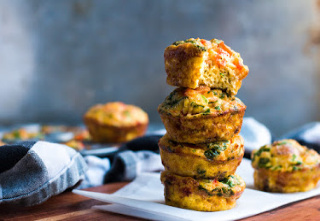 In a perfect world, we’d all sit down every morning to a leisurely, healthy breakfast. In the real world, however, we’ve all done our share of eating breakfast in our cars, on the bus, or at our work stations Sometimes, where you eat the breakfast you grabbed on your way out the door can’t be helped. What can be helped, however, is what you eat. Keep in mind that while omelet muffins are perfect for breakfast on the go, they’d also be great for a weekend brunch. Double the recipe and make a dozen. Then, make time to sit down with family or friends and enjoy the type of long, leisurely breakfast that’s so hard to come by during the week.
In a perfect world, we’d all sit down every morning to a leisurely, healthy breakfast. In the real world, however, we’ve all done our share of eating breakfast in our cars, on the bus, or at our work stations Sometimes, where you eat the breakfast you grabbed on your way out the door can’t be helped. What can be helped, however, is what you eat. Keep in mind that while omelet muffins are perfect for breakfast on the go, they’d also be great for a weekend brunch. Double the recipe and make a dozen. Then, make time to sit down with family or friends and enjoy the type of long, leisurely breakfast that’s so hard to come by during the week.
The beauty of these omelet muffins? What you mix in for added flavor is up to you. Anything you love adding to an omelet—diced vegetables, meat, and some cheese if you’re so inclined—you can add to this recipe to create your own personal omelet muffin.
Servings: 12 muffins
Prep Time: 15 minutes
Cook Time: 40 minutes
Ingredients:

10 Large Eggs
6 oz. Bacon (Cooked)
1 cup chopped Red Bell Pepper
1/4 cup Shredded Cheese
2 Tbsp. Coconut Milk or Cream
2 Tbsp. Chopped Cilantro
Pinch of Black Pepper
Primal Kitchen® Avocado Oil Spray
Instructions:
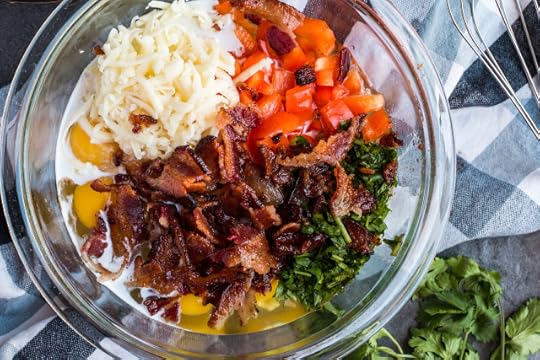
Preheat your oven to 350 degrees Fahrenheit. Arrange the bacon on a parchment covered sheet pan and bake for 20-30 minutes, until it reaches the doneness of your liking. Allow the bacon to cool and chop or crumble it into small pieces.
Whisk the eggs and coconut milk/cream together in a large bowl. Add in the chopped bacon, chopped bell pepper, cheese, cilantro and black pepper. Mix together until well combined.
Spray a set of 12 muffin tins with avocado oil spray. Ladle the egg mixture into each of the tins, about 2/3-3/4 of the way full. Bake for 18-20 minutes, or until they are slightly puffed up, yet firm to the touch. Remove from the oven. and allow them to cool slightly before removing them from the muffin tin. The egg muffins will deflate slightly as they are cooling.

Nutritional Information (per muffin):
Calories: 138
Total Carbs: 1 grams
Net Carbs: 1 grams
Fat: 11 grams
Protein: 11 grams


The post Primal + Keto Omelet Muffins appeared first on Mark's Daily Apple.



September 20, 2019
Weekly Link Love — Edition 47

Research of the Week
Anemia during the first 30 weeks of pregnancy raises the risk of autism and ADHD in the offspring.
Alzheimer’s patients who ate 20 grams of medium chain triglycerides every day—with no other changes—improved cognitive function.
Introverts experience increased well-being when they act like extroverts.
Panic: you feel it in the bones?
New Primal Blueprint Podcasts

Episode 374: Dude Spellings Part 2: Host Brad Kearns welcomes Dude back to the podcast to talk about destroying self-limiting beliefs and flawed childhood programming, and what it was like crossing the Grand Canyon on no food.

Episode 375: Dr. Andrew Weil, MD: Host Elle Russ chats with the world-famous international expert on medicinal plants, integrative medicine, and overall wellness.
Each week, select Mark’s Daily Apple blog posts are prepared as Primal Blueprint Podcasts. Need to catch up on reading, but don’t have the time? Prefer to listen to articles while on the go? Check out the new blog post podcasts below, and subscribe to the Primal Blueprint Podcast here so you never miss an episode.
Media, Schmedia
The expensive, innovative new peanut allergy drug is just peanut flour.
Turns out releasing GMO mosquitoes into the environment wasn’t such a great idea.
Interesting Blog Posts
Social Notes
Everything Else
Elephants are pretty great.
Bee hives should be more Primal.
Treating Alzheimer’s with EMF headsets.
Things I’m Up to and Interested In
Phrase I love: Food is more than the sum of its parts.
Article I enjoyed: Why alternative meats are not the answer for poorer countries (or anyone).
I was saddened, but not surprised: Indigenous group known for their pristine metabolic health begins gaining weight only when they start cooking with vegetable oil.
Video you should send around: Low Carb Diets and Mortality.
Older article I returned to: Fruits and Vegetables Are Trying to Kill You.
Question I’m Asking
What are some examples where heeding the lessons of evolution or the ancestral environment is not helpful?
Recipe Corner
Cauliflower chicken rice.
Huevos rancheros casserole.
Time Capsule
One year ago (Sep 15– Sep 21)
Dear Mark: Does Physical Activity Affect Obesity Risk? – Does it?
After Whole30 or Other Reset: 11 Tips for Reintroducing Allergenic Foods – How to make it work.
Comment of the Week
“Is there anything more thrilling than seeing your question in a ‘Dear Mark’ post.
Maybe skydiving.”
– Ha, Sam!

The post Weekly Link Love — Edition 47 appeared first on Mark's Daily Apple.



September 19, 2019
Top 10 Reasons You’re Not Getting the Results You Want in the Gym
 Good morning, folks. Today’s awesome post is offered up by Primal Health Coach Chris Redig.
Good morning, folks. Today’s awesome post is offered up by Primal Health Coach Chris Redig.
Are you struggling to see results at the gym? Has your strength training hit a dead end? Maybe you’ve noticed that lifting heavy things doesn’t automatically build muscle. It doesn’t automatically get results.
There’s nothing worse than putting in the work but seeing no benefits. Carving time out of a busy schedule to lift heavy things is already a Herculean effort. That time needs to be productive. So, if you’re struggling to get results, here are the ten most likely reasons.
1) You’re Not Fully Motivated (Yet)
Building a lean muscular physique takes considerable work. There’s nothing quick or easy about it. To maintain your motivation, it helps to remember the benefits.
Not only is it fantastic for your health and a great longevity strategy, but it’s arguably the best form of exercise to lose fat.
A lean, muscular physique is useful, visually appealing, and built for adventure. Whether you’re climbing trees with your kids, portaging a boat or carrying someone away from danger, muscles help get jobs done.
Strength training checks all the boxes, and it’s hard to imagine a better use of your time at the gym. But it’s not always easy to make consistent progress. If you’re struggling to get results, your training may lack progressive overload.
2) There’s No Progressive Overload
How do you build muscle? The answer lies in the concept known as progressive overload. When you lift heavy things, you create a significant challenge for your muscles. In response to that challenge, they grow bigger.
So far so good.
But as they grow bigger, the heavy things stop being heavy enough. It may feel heavy enough. You probably don’t enjoy lifting it. But for your muscles, it has stopped being a reason to get bigger.
Consequently, to maintain growth you must strive to increase the challenge. The two best ways to do this are by either increasing the amount of weight you are lifting or increasing the number of reps you are performing.
In other words, if you lift the same weight for the same number of reps week after week and month after month, you are not building muscle. Progressive overload is central to success. To get bigger, focus on lifting heavier.
If you’re not sure how to maintain progressive overload, you’re probably not logging your sessions.
3) You’re Not Logging Your Sessions
But how do you know how many reps to aim for? How do you know how much weight to lift? Initially, the answers will depend on the program you’re following. But once you get started, the answers will be determined by your last session.
So, you need a log book.
First, a log book tracks your progress. It will record how many reps you performed and how much weight you lifted. This is how you know what to do at the gym at your next session. And this is how you know if you’re building muscle.
Second, having a log book will keep you honest. It will force you to train hard. You’ll know the numbers you need to beat. It will prevent you from putting down the bar and thinking, “Well, that was easy.”
Third, it will give you a record of achievement. It takes months to see significant results. That can seem daunting and discouraging. A log book brings those future results into the present. It’s a regular reminder that you’re getting stronger.
Finally, if you start keeping a log book, you may notice that you train inconsistently.
4) You’re Training Inconsistently
Habits first. Muscles second. Nothing short of time and consistency is going to get results. A single hard session at the gym isn’t going to cut it.
Therefore, it’s crucial to build some habits. Going to the gym should be on autopilot. First, this requires a different mindset and a shift in focus. The desire to get results should become an obsession to become consistent.
Second, a fitness journey needs to be sustainable. To be fit requires consistent work. If the work stops, the fitness slips away. Ask yourself, how many times per week do I want to go to the gym 18 months from now? Make gym time sustainable. Become consistent.
But with consistent training comes the risk of training too hard.
5) You’re Training Too Hard
As you progress and strive to beat your last session, you will start failing reps. Failing a rep is exactly what it sounds like. You hit a point where you simply cannot finish another rep without taking a break.
It’s easiest to experience with pullups. After a certain number of pullups, you hit a wall. You can’t get over the bar again without taking a rest. The purpose of strength training is to push that point of failure back further and further.
But you can train too hard. It’s probably not a good idea to constantly fail reps. The goal isn’t to feel wrecked the next day. And if you can’t do another rep, resist the temptation to cheat. Progress shouldn’t come at the expense of good form or range of motion. You don’t want to get sloppy to show fake progress. Your last pullup shouldn’t look significantly different than your first pullup.
Instead, always leave a couple reps in the bank. Stop one to three reps before failure. It’s okay to occasionally hit failure. But don’t spend a day at the gym training to total failure or getting sloppy.
If you’re training too hard, you might also be too focused on fatigue.
6) You’re Too Focused on Fatigue
You’re at the gym lifting heavy things. You’re pouring sweat, out of breath and about five minutes from total collapse.
Good workout?
If you want to build your mental toughness, work capacity or conditioning, then yes. But if your goal is muscle, then it’s questionable. The body adapts pretty narrowly to the stress you impose.
If you’re too focused on fatigue, your body will primarily get better at preventing fatigue. If you want more muscle, then you need to focus on stressing your muscle through progressive overload.
This means you should catch your breath between sets. You don’t need to jump straight from one set into the next just to keep your heart rate up. Take your time. Be ready mentally and physically to lift the weight. Be ready to give your best and most impressive effort each and every set.
Instead of pushing your endurance, try pushing your comfort zone.
7) You’re Stuck Inside Your Comfort Zone
The goal is to feel comfortable all over the gym. Maybe you’ve noticed there are specific areas where all the fit people train. They spend their time by the squat racks and deadlift platforms. There’s a reason they’re over there. Compound lifts work.
They’re time efficient. They improve coordination, movement patterns and flexibility. And they’re useful outside the gym. It’s worth taking the time to learn the challenging lifts. Just take it slow, and do your research.
Owning the difficult lifts will also give your motivation a big boost. Few things are as motivating as stepping outside your comfort zone and mastering a new skill. Stay safe, but don’t stay comfortable.
Weighing yourself can also be very uncomfortable. But is it the right measure?
8) You’re Using the Wrong Measure
The scale doesn’t tell the whole story. Nothing tells the whole story. Progress is slow and hard to see. A fitness coach might ask for weigh-ins, measurements and pics, and even then progress can be hard to detect, until one day it’s obvious.
If you’re starting out or struggling, then you need to build a foundation of improved habits, health and fitness. This is the hardest and most important part of the journey, but it isn’t easy to measure.
Fortunately, it is easy to measure progress in your strength training. You can judge your training by your log book. If you’re getting stronger, then your gym time is productive. The visual results are coming.
If your progress is still stalled, you’re probably training too little.
9) You’re Training Too Little
When you first start strength training, almost any amount of lifting will produce results. Newbie gains are fantastic. You’re constantly setting new PRs and getting stronger. But over time the progress slows and eventually stops.
You could stop right there. Those initial gains are plenty to look, move and feel great. You could focus on other dimensions of fitness or active leisure. And if you have dialed in your diet and lifestyle, you will look completely beach-ready.
But for those who want more, the answer is often more volume. And at this point your training becomes a balancing act. On the one hand, you need to ask “Can I spend more time lifting? Am I recovering? Am I avoiding injury?” And on the other hand you need to ask “Am I getting stronger? Am I increasing my lifts or reps?” There’s no formula. It’s an N=1 experiment.
If you’re struggling to increase your volume of training, it may be time to look at your recovery strategy.
10) You’re Not Recovering
The central pillar of any recovery strategy is diet and lifestyle. As readers of Mark’s Daily Apple, you already know what you want to be eating. Now the hard part is doing it. If past efforts have been ineffective and you’re struggling, I recommend taking a slow approach.
Better and best are not enemies. Many of the benefits of eating a good diet are dose responsive. This means that small improvements in your diet provide real benefits. Plus, those small improvements become habits and generate momentum.
Eating well is a set of skills. And skills need to be practiced.
My own diet transformation was a multi-year journey. Over time bad habits turned into good habits. The good habits accumulated. And one day, my diet was on autopilot. It takes time. It takes consistency. It’s worth it.
Strength training is a key ingredient of looking, moving and feeling your best. I hope some of these recommendations help you break through to the next level. Thanks for reading.
 About the Author:
About the Author:
Chris Redig is a health and fitness coach. He loves helping people move, look and feel their best by optimizing their nutrition, movement and lifestyle. He is a Primal Health Coach, a Henselmans Personal Trainer and a Movnat Master Trainer. He has lived, adventured and traveled in 20 different countries and holds a Bachelor of Arts in International Affairs. In particular, he loves to help adventure-enthusiasts build ready-for-anything minds and bodies. He currently lives in Denmark with his wife and two kids. For online coaching or a free consultation, visit www.chrisredig.com. Or you can follow him on Instagram.
To learn how you can become a certified Primal Health Coach like Chris Redig, click the following link and download the free eBook How to Become a Health Coach: 5 Steps to Embarking on a Career You Love.
Thanks to Chris for stopping by the blog today and sharing his coaching wisdom. And thanks to everyone out there for reading today. Have a question for Chris—or a post idea our Primal Health Coaches can weigh in on? Let us know down below. Have a great end to your week.

The post Top 10 Reasons You’re Not Getting the Results You Want in the Gym appeared first on Mark's Daily Apple.



September 18, 2019
Fitness Advice From A Primal Elder to Younger Groks: What To Focus On and What To Let Go Of
I’ve been around the block. I’ve spent thousands upon thousands of hours in the gym, on the track, on the bike, in the water. I’ve tasted glory and defeat. I’ve been sidelined with injuries, I’ve gone stretches where I felt invincible. I’ve trained with, and trained, some of the best to ever do it. And along the way, I learned a lot: what to do, what not to do, what matters, what doesn’t.
Last week a comment from a reader gave me a great idea for a post: Give fitness advice to younger Groks. Help them avoid the mistakes I made and capitalize on the wins.
Let’s get right to it.
“Gain As Much Muscle As You Can Through Natural Means.”
Lean mass, which primarily includes muscle mass but also connective tissue and organ reserve, is in my opinion the single most important variable for overall health, wellness, physical capacity, and performance. The more muscle you have, the better you’ll age. The younger people will assume you are. The more capable you’ll be. The less frail. The harder to kill. The better to conceive children, give birth, and be an active parent (and eventually grandparent). You’ll have more energy. Basically, more muscle allows you to resist gravity, and gravity is what slows you down, breaks you down, and makes you feel old.
The more muscle you have when you’re younger, the more muscle you’ll retain as you grow older. Because when you’re older, you can still gain muscle, but not as easily. You’ll need more stimulus and more protein to get the same effect. And entropy is working against you.
And by “natural means,” I mean don’t take anabolics unnecessarily (unless you have low/lower testosterone and a doctor helps you gain physiological levels via TRT). Don’t spend three hours a day in the gym. Don’t let strength training take over your life.
“Listen To Your Gut. If Something Feels Wrong, or Even Not Right, Back Off.”
I realized that every single time I hurt myself, I knew it was coming on some level. I had a premonition that I shouldn’t train or perform that day. Sometimes that message would come hours before the injury. Sometimes it would come moments before. It was usually non-specific, often nothing more than a vague sense of disquiet. But there was always something.
That time I strained my bicep tendon maxing out on bench, I remember waking up in the morning feeling like I probably shouldn’t go for the PR. Still I went for it and paid the price.
And last year during a set of pull-ups, I’d noticed I was leading with my chin—something I’m usually good about avoiding—and told myself to stop. But I thought I had another rep in me and, sure enough, as I was trying to finish the next pull-up, I felt something to the left of my ear and down around my trap give. I actually did keep the chin neutral but still got hurt. Leading with my chin was my body’s way of indicating that I was reaching the limit. I ignored that indicator and regretted it.
It’s not always a physical sensation or “pain” at all. Sometimes it’s just a weird feeling in my gut that says “this isn’t right.” Listen to that feeling. One day it won’t just be a tweaked shoulder or tendon. It might be downright catastrophic.
“Pull More Than You Push.”
Your phone. Your desk job. Look around at the average person walking around—their shoulders are rolled inward, internally rotated. Are yours? Society pulls our shoulders inward at every turn, and then you go to the gym and do a bunch of push-ups, bench presses, and dips, followed by a few sets of rows. That’s not enough. To maintain shoulder health (and build a strong, stable back from which to exert great shoulder force), you should train with a 2:1 pull:push ratio. That means for every 10 reps of presses (dips, pushups, bench, overhead press, etc) you do 20 reps of pulls (rows, pullups, face pulls, etc). If you already have problems with your shoulder or posture, bump that up to a 3:1 ratio.
“Focus On Compound Movements, But Include Some Isolation/Bodybuilding Movements As Well.”
While compound, multi-joint movements are the best way to build total body strength and athleticism, it turns out that training the “beach muscles” is important too. For instance, an exercise like curls can go a long way toward building up your bicep tendons and ligaments, preparing you for placing more stress on the muscles themselves and helping you avoid injuries down the line.
Plus, they make you look good—which is its own benefit but also motivates you to keep going.
“Compete With Yourself.”
Competition is good. Competition compels us to be greater, to improve ourselves. Just be wary about whom you’re competing with. These days, you have billions of potential competitors. You can hop on social media and find hundreds of people with better bodies, stronger lifts, faster times, and more perfect technique than you. It’s fine to use these people as motivation to improve yourself, but don’t beat yourself up—or, worse, get yourself injured—trying to beat them. Not everyone can do everything. We have different skills, different capacities, different priorities.
What you can and should do is compare your current self to your past self. Are you getting stronger than that person? Faster? Fitter? Leaner? Great. That’s how you do it. That’s what matters most.
“Walk Every Day.”
You won’t get the physiological/fitness effects right away, but they build up over time. Walking every day for the rest of your life is all about accruing compound interest.
From being in nature to improving blood glucose control to better cognitive function to improved insulin sensitivity to fat loss to joint mobility, walking is legitimate exercise.
“Get a Tribe.”
There’s research showing the physiological benefits of training in a group setting, but that’s tangential to my main point: having a fitness tribe—a group of friends, a sport, a training school—creates accountability, which promotes consistency. When someone’s counting on you, expecting you, you’re more likely to stick with the training. When you train with your friends or tribe toward a common goal, it becomes a joyous occasion. And even when it’s downright difficult and miserable, you can endure by drawing on the energy of the others.
“Have Fun.”
If you can figure out a way to train in a way that you love and truly enjoy on an intrinsic level, you’ll never be out of shape.
For some people, that means CrossFit. Or powerlifting. Or bodybuilding. Or running, martial arts, wrestling, parkour, or rock climbing. Dancing, mountain biking, surfing. There are many ways to skin the cat, but what really matters is that you enjoy the act of training for its own sake.
For me, I trained in the opposite manner. I loved the feeling of finishing a race. I liked the accolades and pride I felt and received when I won. But the act of racing? The moment to moment experience of training all those days? Miserable. That should have been an indication that I shouldn’t be doing it. I ignored it, though, and paid a price.
“Train To Support Your Goals.”
These days, as I’m fond of saying, I train to play. I train to support my Ultimate Frisbee match every weekend. I train so that I can get out on the paddle board twice a week. I train so I can try all the fun new fitness gadgets. If I were to do heavy squats and deadlifts 3 times a week, I wouldn’t be able to play Ultimate very well or go paddling whenever I wanted. I’d be recovering. Since my goal is to play, my training has to support that.
Search within your soul and figure out what your goals are, then hew your training to them. Are you trying to get as strong as possible? As fast? To build up your VO2max? To look good naked? Then align your training with your goals.
“Don’t Think You Have To Squat and Deadlift and Press With a Barbell.”
Those lifts are fantastic for building strength and developing athleticism, but they aren’t the only paths. Lunges, single leg deadlifts, kettlebell swings, trap bar deadlifts, and dumbbell presses are excellent alternatives that work many of the same muscles and can even be gentler on the body than the Big Three lifts.
There’s probably way more that can be said on this subject, but that’s where you come in. Down below, let me know what you’d say to your younger self who came to you asking about fitness tips. What would you do differently? What would you keep the same?

The post Fitness Advice From A Primal Elder to Younger Groks: What To Focus On and What To Let Go Of appeared first on Mark's Daily Apple.



September 17, 2019
Dear Mark: Psyllium, Hex Bar Deadlifts, Getting Strong vs Getting Big, Isometrics
 For today’s edition of Dear Mark, I’m answering four questions.
For today’s edition of Dear Mark, I’m answering four questions.
First, is psyllium husk insoluble or soluble fiber? Second, how do I structure my hex bar deadlift workouts? I give a couple options. Third, what kind of training (and eating) should a person do who doesn’t want to gain much muscle or “get big”—just strong? And fourth, what do I think about isometric strength training?
Let’s go:
Insoluble fiber may be linked to increased colorectal cancer mortality.
Question: is psyllium husk the insoluble fiber they are referring to in this study that was associated with increased colon cancer? I’ve read it several times and I’m confused.
Some prebiotics are included in my probiotics like MOS and inulin. I think these are soluble. Am I right? I’m confused
I wasn’t able to pull the full study, so I don’t have a complete breakdown of what prebiotic supplements these women were specifically taking. They do mention that 3.7% of the women used a prebiotic made primarily of psyllium, which is an odd aside. What about the rest of them?
At any rate, psyllium is mostly soluble fiber—about 70% soluble, 30% insoluble. MOS and inulin are also both soluble fibers.
What is the set/ rep recommendation for the Hex Bar DL? Also how many times a week are you doing this? I am a coach/teacher and love the minimalist type of exercise you provide. Awesome stuff
It really varies.
Somedays I’ll do rest-pause supersets on the hex bar:
Lift it as many times as I can comfortably (I’ll push hard but stop well short of failure).
Rest 30 seconds.
Lift it as many times as I can comfortably (this will be fewer reps than the previous set).
Rest 30 seconds.
Lift it as many times as I can comfortably (even fewer).
Drop the weight by 10-15%, then do max reps.
Once you start hitting 25 total reps for the first three rest-pause sets, you can increase the weight. The beauty of this method is that it’s very intense without you needing to throw on a ton of extra weight—great for older folks who don’t want to mess with extremely heavy weights. Compressing the sets gives you less rest and gives it an anaerobic component; you’ll be breathing hard when it’s over. And it’s over quick. No more pacing around the gym between heavy deadlift or squat sets. No more working up the courage to lift the weight. You just do it, set a 30 second timer, and do it again (and again).
The rest pause method is when I want to be in and out real quick.
Another way is to just have it loaded up and ready to go around my house. I’ll grab a quick little set every time I walk by. Out the door to walk the dog? Do a set. Making coffee in the next room over? Do a set. Taking a break from writing? Do a set. By the end of the day, I’ll have accumulated 4-6 sets of solid hex bar deadlifts. This is the exercise snack or microworkout method.
Both of these methods work great with any exercise.
This video left me thinking about muscle strength vs muscle growth a little bit. In my mind, my ideal body composition would be lean, relatively small, and freakishly strong. I’m wondering, Mark, if there are ways to train what you have to be stronger without making gains in terms of mass?
In a very general sense, lower reps and higher weight will get you stronger without adding as much hypertrophy.
Doing compound movements that recruit multiple joints and muscles at once will get you strong without necessarily “bulking” you up. Doing isolation movements will also get you strong, but they’ll also build specific muscles. It makes sense why:
When you do a compound movement, the weight is “spread” across all the joints and junctions and tissues that perform it. So the system as a whole gets stronger—gets better at moving the weight—but the individual components don’t “blow up.” They grow, but in a cohesive, integrated manner with the rest of the body.
That’s why most bodybuilders don’t rely on squats and deadlifts and pullups. They do those movements because they’re important for their physiques and their strength, but they’re generally not enough to get huge. To get really “bulky,” you’ll probably need isolation movements.
But remember that larger muscles are also stronger muscles, all else being equal. Getting bigger will allow you to get stronger. You’ll have a bigger “strength ceiling.”
Oh, I almost forgot. Your food (and calorie) intake might be the major determining factor in how much muscle you gain in response to training. If you fail to consume more calories than you expend, you won’t gain much muscle. You’ll definitely retain it, though. If that’s what you’re going for, you can try eating less food and protein. Or at least don’t eat more than you burn (this is inexact, I know; a ballpark works).
Have you tried isometrics? I am getting great results with them, in a very short time frame.
I haven’t tried them much myself, but we had a guest post a few years back all about isometrics.
For those who don’t know, an isometric contraction is when the muscle contracts without lengthening or shortening. Concentric contractions contract the muscle as it shortens (lifting a weight). Eccentric contractions contract the muscle as it lengthens (lowering a weight). Isometric training purports to strengthen the muscle by using isometric contractions.
A few examples:
Pushing against an immovable object, like the wall.
Holding yourself in a difficult position, like a wall squat.
Trying to lift an object that’s too heavy to lift, like a barbell.
Hanging from a bar with flexed arms and just holding the position.
Standing in a doorway with your back against the frame, pressing hard against the opposite frame with one arm.
Trying to lift your car.
Sitting in a chair and pulling up on the seat as hard as you can.
You get the idea.
It clearly works at some level.
Isometric training lowers high blood pressure, for example.
It can also help people learn to activate their muscles, simply by forcing you to focus entirely on the feeling of the muscle.
It goes to show that there’s always a way to train. Always.
That’s it for today, folks. Thanks for reading, take care, and have a great week.

The post Dear Mark: Psyllium, Hex Bar Deadlifts, Getting Strong vs Getting Big, Isometrics appeared first on Mark's Daily Apple.



Mark Sisson's Blog
- Mark Sisson's profile
- 199 followers



